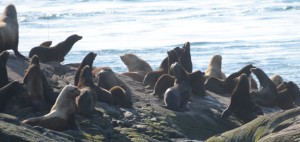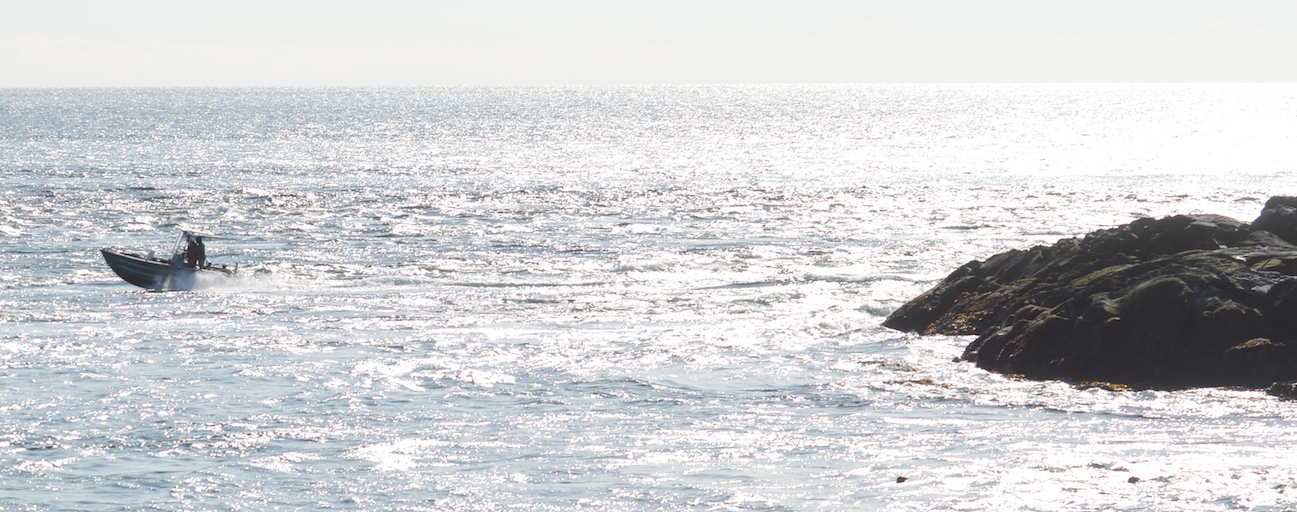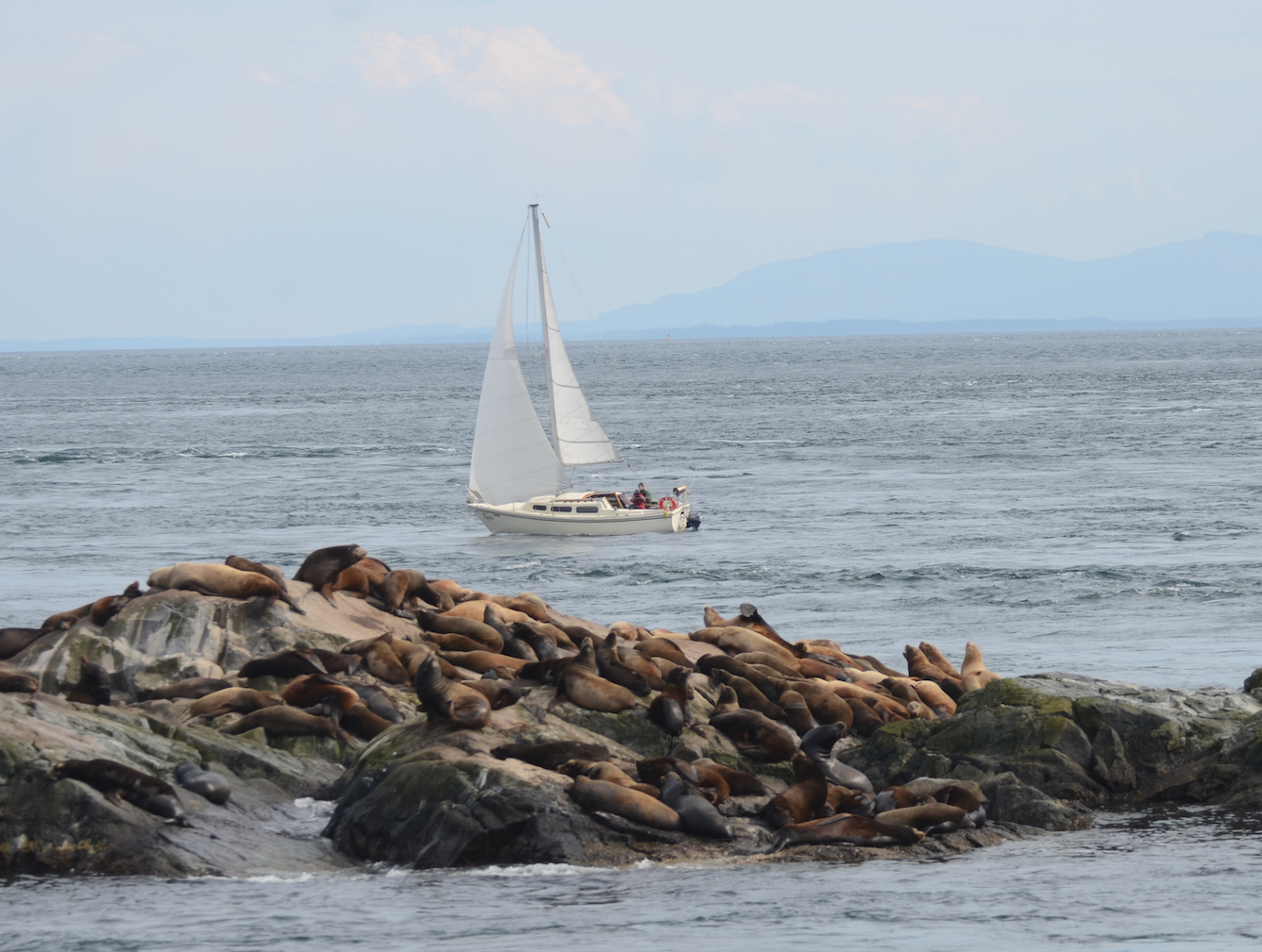It was clear here early and once easterly outflow breezes cleared the American side, it was a beautiful day on the Strait. There was a hazy view all the way to Mt. Baker in the east and out to Bahokas Peak in the west. The barometer is continuing its leisurely dive, started Thursday and as the sunsets, is close to 1003 hPa. The forecast is for more of the same with showers and a chance of thunderstorms.
No tour boats or fishers were noted in the Ecological Reserve today however one boat sped through Middle Channel from the west and then after slowing down went between the South Islands and extremely close to seals and sea lions. Sea lions and seals were on high alert. All of the seals went into the water and some of the sea lions jumped in between the rock and the boat. The boat went back and forth very close to the sea lions several times before speeding off in the direction of Victoria. The whole thing only took a few minutes. The rest of the day made up for it in calm and peacefulness.
Last night as I was saying goodnight to the students who had been helping with chores, there was a definite smell of baleen whale breath in the evening air. I thought it might be the first Humpback Whale of the season. We looked but it was almost dusk and we didn’t see a whale. I heard on the VHF radio today that the whale watching boats had spotted their first Minke Whale of the season, so my guess is that there was a stinky Minke upwind last night.
While doing the seawater sample today, I noticed that there is plenty of big plankton right now. Visible from the jetty are gazillions of beautiful ctenophores or comb jellies. Their scientific name is Pleurobrachia and another common name is sea gooseberry. These jellies are spherical and unlike most jellies they don’t have stinging cells, just sticky cells on their two dangling tentacles, to tangle their prey. They also have eight rows of amazing, tiny paddle-like structures called combs or ctenes. The combs basically do the wave and when they do, it makes a rainbow-like shimmering. So a clear ball, with eight rows of rainbow inducing pulsations and two trailing tentacles; this is a pretty intriguing looking creature.
Ctenophores are important top-down regulators of copepod abundance so they are important ecologically. Copepods are little crustaceans that feed directly on phytoplankton, the photosynthetic kind of plankton. The copepods can be so abundant that at times most of the phytoplankton biomass can be found in their guts. One reason the water is so clear right now may be due to an abundance of copepods. There are also lots of cross-jellies, which are true jellies or cnidarians, meaning they can sting. Their scientific name is Mitrocoma cellularia and they are also predators on smaller animal plankton like copepods. These large plankters are of course also food for baleen whales.
I had a bit of a catch-up day today. I gave the solar panels a thorough scrub and wash, fixed the underwater camera, took photos, cleaned up in front of the boat-house and generally monitored and documented things while tidying up.
It has been a treat to have students out for the weekend and I think they have been enjoying the peacefulness, nature and each other’s company. I went out to dinner for the first time on the island and we had a delicious meal prepared by the students.


